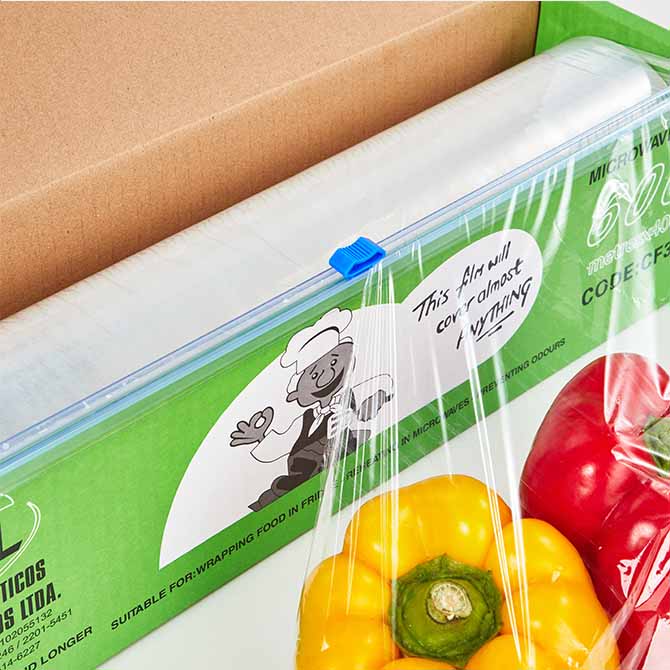Is Plastic Wrap Low Density Polyethylene?
Plastic wrap — also called cling film, Food Wrap, or stretch film — is a ubiquitous kitchen product used to cover and preserve food. A common question is whether this plastic wrap is made from low density polyethylene (LDPE). The short answer is: often yes, but not always. The exact material varies with the manufacturer, the product’s intended performance, and regional regulations. This article explains the materials commonly used for plastic wrap, why LDPE is frequently chosen, how LDPE compares to other films, and the environmental and safety considerations consumers should know.

What is Low Density Polyethylene (LDPE)?
LDPE is one member of the polyethylene family. It is characterized by a relatively low density and a branched molecular structure. These features produce several useful properties for thin films:
Flexibility and softness: LDPE films are pliable and can conform to irregular shapes, making them suitable for wrapping food.
Clarity: LDPE can be produced as a clear film, allowing users to see wrapped contents.
Moisture resistance: It provides a barrier to moisture that helps prevent foods from drying out.
Chemical stability: LDPE resists many acids and bases and is generally safe for direct food contact.
Materials Used to Make Plastic Wrap
Although LDPE is commonly used for household plastic wrap, other materials are also found in commercial and specialty wraps:
LDPE (Low Density Polyethylene) — widely used for domestic cling films and soft films.
LLDPE (Linear Low Density Polyethylene) — often blended with LDPE to improve tensile strength and stretch performance while maintaining flexibility.
PVDC (Polyvinylidene Chloride) — historically used for high-barrier commercial wraps because it has very good oxygen and moisture barrier properties; however, PVDC is less environmentally friendly and more expensive.
PVC (Polyvinyl Chloride) — used in some cling films in the past. PVC offers good cling and flexibility but contains chlorine, which raises environmental and health disposal concerns in some countries.
Compostable or bio-based films — newer alternatives made from plant-derived polymers or compostable blends intended to reduce fossil-fuel dependence; performance and certification vary by brand.
Why Manufacturers Choose LDPE
LDPE is often selected because it balances performance, cost, and regulatory acceptance. Key reasons include:
It can be produced as very thin sheets that cling adequately to smooth surfaces.
It is generally approved for food contact in many jurisdictions and does not impart tastes or odors.
It is relatively inexpensive to manufacture at scale compared with specialty polymers.
LDPE is recyclable in principle (resin code #4), which can be an advantage where film collection programs exist.
How LDPE Compares to Other Wrap Materials
Different films have distinct strengths and trade-offs:
LDPE vs. PVDC: PVDC provides superior oxygen and aroma barriers, which helps in long-term commercial packaging, but PVDC is harder to recycle and more costly. LDPE is more recyclable and widely accepted for household use.
LDPE vs. PVC: PVC contains chlorine and may release harmful compounds if incinerated; LDPE lacks chlorine and is considered safer for disposal and food contact in many markets.
LDPE vs. LLDPE blends: Blending LLDPE with LDPE can increase toughness and puncture resistance while preserving softness and clarity.
Environmental and Safety Considerations
Single-use plastic wrap raises environmental concerns regardless of the polymer. While LDPE is recyclable, very thin films are often excluded from curbside collection because they can tangle in sorting equipment. Many recycling programs instead accept plastic films at designated drop-off points (supermarket film collection bins).
Some manufacturers now offer alternative solutions — compostable wraps, beeswax-coated cloths, and reusable silicone lids — to reduce single-use waste. When choosing a product, check manufacturer claims and certifications (e.g., ASTM, EN compostability standards) and verify local recycling options.
Food Safety and Usage Tips
Most LDPE Cling Films are safe for cold storage and short-term refrigerator use. Always follow the product label for microwave use — not all films are microwave-safe.
Avoid direct contact with hot surfaces or high-fat, high-temperature cooking unless the wrap explicitly states microwave or oven safety.
If you have specific health concerns or need medical-grade packaging, consult product specifications or manufacturers for compliance data.
Summary: Many household plastic wraps are made from LDPE or LDPE/LLDPE blends because these materials provide the right mix of flexibility, clarity, and food-safety performance. However, other materials such as PVDC, PVC, and newer compostable films are also used depending on barrier needs and environmental goals. Check packaging labels and local recycling rules to make the most informed choice.



